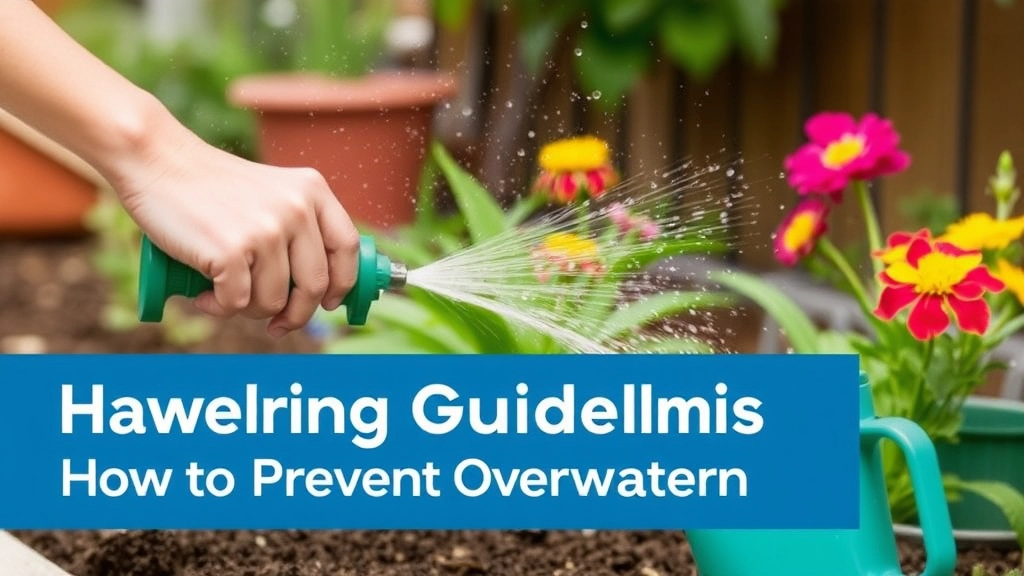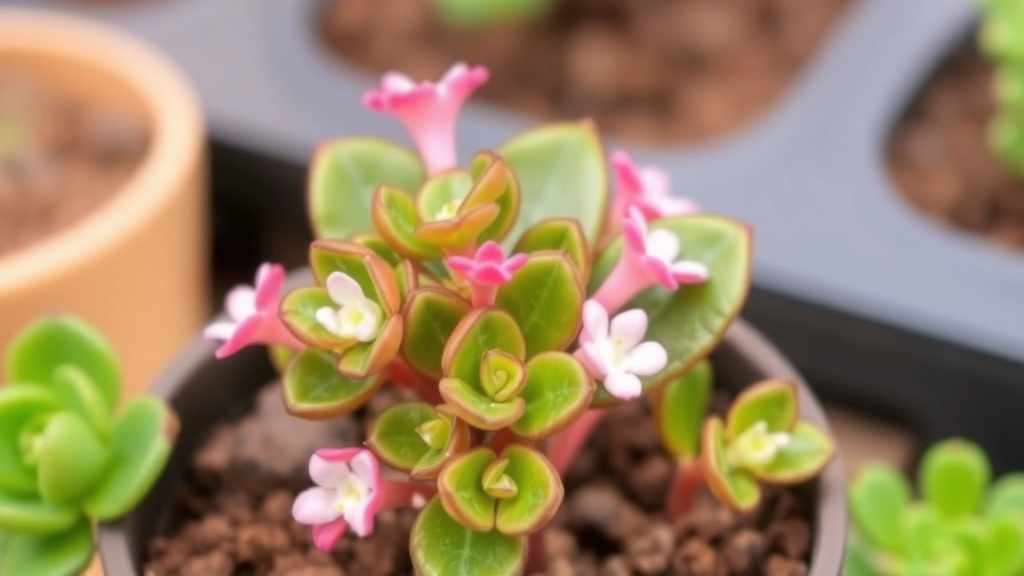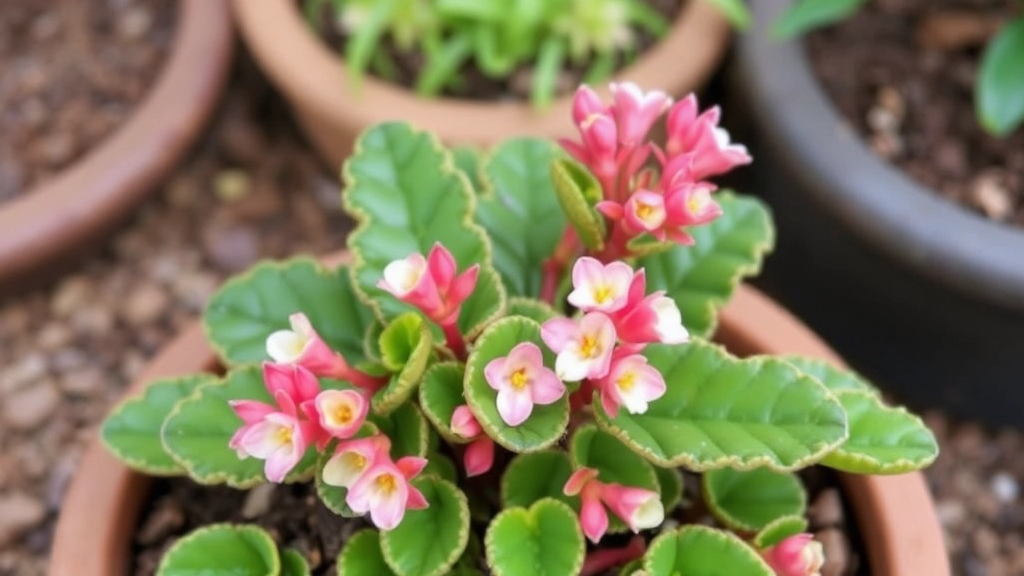Caring for Kalanchoe Tomentosa
Learning how to care for Kalanchoe Tomentosa, also known as the Panda Plant, can be incredibly rewarding. This unique succulent thrives with the right balance of light, water, and soil. Whether you’re a seasoned plant parent or a beginner, these care tips will help you keep your Kalanchoe Tomentosa healthy and vibrant.
Light Requirements
First, ensure your Panda Plant gets plenty of indirect sunlight. It loves bright light but can get scorched by direct sun.
Watering Tips
Watering is crucial; let the soil dry out completely between waterings to avoid root rot.
Soil Mix
Use a well-draining soil mix to keep the roots healthy, and consider adding some perlite for extra drainage.
Follow These Steps
Follow these simple steps, and your Kalanchoe Tomentosa will flourish.
Are you struggling to provide the right environment for your Kalanchoe Tomentosa?
Understanding the optimal light and temperature conditions is crucial for the thriving growth of this beautiful succulent.
## Light Requirements
Kalanchoe Tomentosa, often known as the “Panda Plant,” flourishes in bright, indirect sunlight. Here are some key points to consider:
– **Direct Sunlight**: While it can tolerate some direct sunlight, prolonged exposure can scorch its leaves.
– **Ideal Location**: A south or west-facing window is typically the best spot.
– **Artificial Light**: If natural light is limited, consider using grow lights to supplement.
## Temperature Preferences
Temperature plays a significant role in the health of your Kalanchoe Tomentosa.
– **Optimal Range**: This plant thrives in temperatures between 18°C to 24°C (65°F to 75°F).
– **Cold Sensitivity**: It is sensitive to cold and should be protected from temperatures below 10°C (50°F).
– **Humidity Levels**: Kalanchoe prefers low humidity, making it ideal for most indoor environments.
For more detailed care tips, you might find our guide on [Kalanchoe Tomentosa Care Tips and Growing Guide](https://planthq.org/succulent-kalanchoe-tomentosa-care-tips-and-growing-guide/) helpful. Additionally, if you’re interested in exploring the different varieties, check out our article on [Kalanchoe Tomentosa Varieties, Care, Types, and Propagation](https://planthq.org/kalanchoe-tomentosa-varieties-care-types-and-propagation/).
Watering Guidelines: How to Prevent Overwatering

Ever looked at your Kalanchoe Tomentosa and thought, “Am I giving it too much water?” You’re not alone! Overwatering is a common concern for many plant lovers, and it can lead to some serious issues for your succulent.
Understanding Your Plant’s Needs
Kalanchoe Tomentosa, also known as “Panda Plant,” thrives in dry conditions. Here are some simple tips to keep your watering routine on point:
- Check the Soil: Always stick your finger about an inch into the soil. If it feels dry, it’s time to water.
- Watering Frequency: During the growing season (spring and summer), you might water every 2-3 weeks. In the dormant season (fall and winter), cut back to once a month or even less.
- Watering Method: When you do water, give it a good soak but ensure excess water drains out. This prevents soggy roots.
- Signs of Overwatering: Yellowing leaves or a mushy stem? That’s a red flag! If you spot these, hold off on watering for a while.
Tips for Success
- Use a Pot with Drainage Holes: This is a must! It allows excess water to escape, keeping your plant happy.
- Time of Day: Water in the morning. This helps the plant absorb moisture before the heat of the day kicks in.
- Adjust for Environment: If your home is humid, you might need to water less often. Always observe how your plant reacts.
Selecting the right soil and potting mix is crucial for the health of your Kalanchoe Tomentosa. Are you worried about your plant’s growth and overall vitality?
The ideal soil for Kalanchoe Tomentosa should be well-draining and provide adequate aeration. Here’s what to consider when choosing your potting mix:
– **Cactus or Succulent Mix**: Look for a pre-made cactus or succulent mix, as these are specifically designed to prevent water retention.
– **Add Perlite or Sand**: If you prefer to create your own mix, combine regular potting soil with perlite or coarse sand. This enhances drainage.
– **pH Levels**: Aim for a slightly acidic to neutral pH, ideally between 6.0 and 7.0.
– **Organic Matter**: While Kalanchoes don’t require heavy organic matter, a small amount can help retain some moisture without causing root rot.
– **Avoid Heavy Soils**: Stay away from soils that retain too much moisture, like those containing peat moss or clay.
By ensuring your Kalanchoe Tomentosa is planted in the right soil mix, you’ll create a thriving environment that promotes healthy growth. For more in-depth tips, you can check out the [complete care guide for Kalanchoe Tomentosa](https://planthq.org/succulent-kalanchoe-tomentosa-care-tips-and-growing-guide/) and learn about the [best soil for Kalanchoe Blossfeldiana care](https://planthq.org/best-soil-for-kalanchoe-blossfeldiana-care-tips/).
Simple Steps for Propagating Kalanchoe Tomentosa

Are you eager to expand your Kalanchoe Tomentosa collection but unsure where to start? Propagation is an excellent way to grow your plant family without breaking the bank.
Understanding Propagation Methods
There are two primary methods for propagating Kalanchoe Tomentosa: leaf cuttings and offsets. Each method has its own charm, and I’ll guide you through both.
Leaf Cuttings
- Select a Healthy Leaf: Choose a mature, healthy leaf from your Kalanchoe.
- Make the Cut: Using a clean, sharp knife, cut the leaf at its base.
- Drying: Allow the leaf to dry for a few days until a callus forms over the cut end. This helps prevent rot.
- Planting: Place the callused end in well-draining soil, ensuring it’s upright.
- Watering: Lightly mist the soil to keep it slightly moist but not soggy.
- Light Conditions: Place the cutting in bright, indirect sunlight.
- Wait for Roots: After a few weeks, roots will develop, and you can treat it like a mature plant.
Offsets
- Identify Offsets: Look for small plantlets, or offsets, growing at the base of your Kalanchoe.
- Carefully Remove: Gently twist or cut the offset away from the main plant.
- Drying: Similar to leaf cuttings, let the offset dry for a day or two.
- Potting: Plant the offset in a suitable potting mix, ensuring it has good drainage.
- Watering: Water sparingly until you see new growth.
- Light Conditions: Provide bright, indirect light to encourage growth.
Common Pests and How to Treat Them
As we delve into the world of Kalanchoe Tomentosa, it’s essential to address a concern many plant enthusiasts face: pests. These little invaders can wreak havoc on your beloved succulent, but with the right knowledge, you can keep them at bay.
Identifying Common Pests
Kalanchoe Tomentosa is generally resilient, but it can attract a few common pests:
- Mealybugs: These pests appear as small, white, cottony masses on the leaves and stems.
- Aphids: Tiny and green (or black), they cluster on new growth, sucking the sap.
- Spider Mites: These are nearly invisible but leave fine webbing on your plant.
- Scale Insects: They look like small brown bumps on the leaves and stems.
Treatment Methods
If you notice any of these pests, don’t panic. Here are some effective treatments:
- Manual Removal: For mealybugs and scale, gently wipe them off with a cotton swab dipped in rubbing alcohol.
- Insecticidal Soap: Spray your plant with a solution of insecticidal soap, ensuring thorough coverage. This is effective against aphids and spider mites.
- Neem Oil: A natural pesticide, neem oil can deter a variety of pests. Mix it with water and spray it on the affected areas.
- Isolation: If you notice a severe infestation, isolate the affected plant to prevent the pests from spreading to your other plants.
Prevention Tips
To keep your Kalanchoe Tomentosa healthy and pest-free:
- Maintain Good Air Circulation: This helps prevent pests from settling in.
- Regular Inspections: Check your plants weekly for any signs of infestation.
- Avoid Overwatering: Pests thrive in damp conditions, so ensure your plant is not sitting in water.
By staying vigilant and employing these strategies, you can protect your Kalanchoe Tomentosa from pests and ensure it thrives. For more detailed care tips, check out our guide on Kalanchoe Tomentosa care and explore the various propagation methods to expand your collection.
Seasonal Care: Adapting to Dormancy and Growth Phases
So, you’ve got your Kalanchoe Tomentosa thriving, but have you thought about how the seasons affect its care?
As the seasons shift, your plant’s needs will change too.
FAQs on How to Care for Kalanchoe Tomentosa
What is the best way to water Kalanchoe Tomentosa?
Water your Kalanchoe Tomentosa when the soil feels dry about an inch deep. During the growing season (spring and summer), water every 2-3 weeks. In the dormant season (fall and winter), reduce watering to once a month or less. Always ensure excess water drains out to prevent soggy roots.
How can I prevent overwatering my Kalanchoe Tomentosa?
To prevent overwatering, use a pot with drainage holes, water in the morning, and adjust your watering frequency based on your home’s humidity levels. Look out for signs of overwatering, such as yellowing leaves or a mushy stem, and hold off on watering if you notice these symptoms.
What are the signs of an overwatered Kalanchoe Tomentosa?
Signs of overwatering include yellowing leaves and a mushy stem. If you notice these signs, reduce your watering frequency and allow the soil to dry out before watering again.
How do I propagate Kalanchoe Tomentosa using leaf cuttings?
To propagate using leaf cuttings, select a healthy leaf, cut it at the base, let it dry for a few days, and then plant it in well-draining soil. Lightly mist the soil and place the cutting in bright, indirect sunlight. Roots should develop in a few weeks.
What are offsets, and how do I use them to propagate Kalanchoe Tomentosa?
Offsets are small plantlets that grow at the base of the main plant. To propagate using offsets, gently remove them from the main plant, let them dry for a day or two, and then plant them in a suitable potting mix with good drainage. Water sparingly and provide bright, indirect light.
What type of soil is best for Kalanchoe Tomentosa?
Kalanchoe Tomentosa thrives in well-draining soil. A cactus or succulent mix is ideal, as it prevents water from accumulating around the roots, reducing the risk of root rot.
How much light does Kalanchoe Tomentosa need?
Kalanchoe Tomentosa prefers bright, indirect sunlight. Direct sunlight can be too intense and may cause the leaves to scorch. Place your plant in a spot where it receives plenty of light but is protected from direct sun exposure.
Can I grow Kalanchoe Tomentosa indoors?
Yes, Kalanchoe Tomentosa can be grown indoors. Ensure it receives bright, indirect sunlight and is planted in well-draining soil. Adjust your watering routine based on the indoor environment to keep the plant healthy.
When is the best time to water Kalanchoe Tomentosa?
Water your Kalanchoe Tomentosa in the morning. This allows the plant to absorb moisture before the heat of the day, reducing the risk of fungal growth and other water-related issues.
How often should I water Kalanchoe Tomentosa during the dormant season?
During the dormant season (fall and winter), reduce your watering frequency to once a month or even less. Always check the soil moisture before watering to avoid overwatering.
References
-
How to Grow Kalanchoe Tomentosa Indoors
-
Kalanchoe Tomentosa Care: Growing Panda Plants
-
Kalanchoe Tomentosa Care and Propagation
